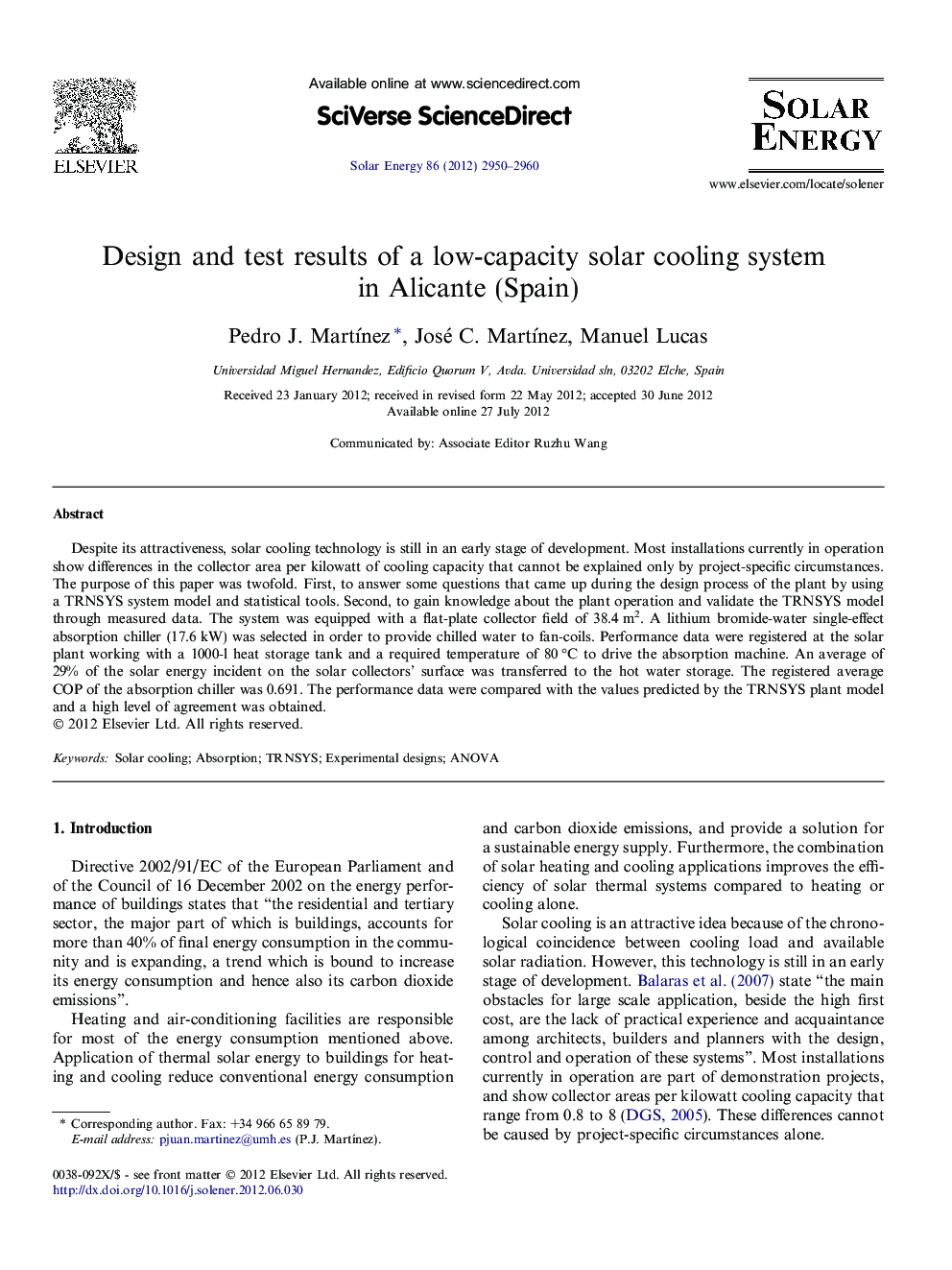| Article ID | Journal | Published Year | Pages | File Type |
|---|---|---|---|---|
| 1550702 | Solar Energy | 2012 | 11 Pages |
Despite its attractiveness, solar cooling technology is still in an early stage of development. Most installations currently in operation show differences in the collector area per kilowatt of cooling capacity that cannot be explained only by project-specific circumstances. The purpose of this paper was twofold. First, to answer some questions that came up during the design process of the plant by using a TRNSYS system model and statistical tools. Second, to gain knowledge about the plant operation and validate the TRNSYS model through measured data. The system was equipped with a flat-plate collector field of 38.4 m2. A lithium bromide-water single-effect absorption chiller (17.6 kW) was selected in order to provide chilled water to fan-coils. Performance data were registered at the solar plant working with a 1000-l heat storage tank and a required temperature of 80 °C to drive the absorption machine. An average of 29% of the solar energy incident on the solar collectors’ surface was transferred to the hot water storage. The registered average COP of the absorption chiller was 0.691. The performance data were compared with the values predicted by the TRNSYS plant model and a high level of agreement was obtained.
► We answer design questions by using a TRNSYS model and statistical tools. ► The solar system performance is rather insensitive to the hot water storage volume. ► Highest solar fractions correspond to the lowest required heat storage temperatures. ► Average cooling production is 1.64 times higher than average electricity consumption. ► Data registered at the plant agree with the values predicted by the TRNSYS model.
